Our recent Creating Connection webinar event brought together members of the Community Builders Network and attendees from all over the world, representing sectors including Aerospace, Education, Engineering, Broadcasting and Law.
Rebecca Cedrone, Vice President of Marketing & Enterprise Partnerships at Aluminati, spent 20-years of her career at Coca-Cola where she utilized her expertise in marketing to drive impact with brands, organizations and people. Four years ago she became their Director of Alumni & Community Marketing and was the keynote speaker at our recent Creating Connection webinar. Rebecca shared her experience in establishing the Coca-Cola alumni community from initial research through strategy development and launch.
Lifelong employment is no longer the norm. Building lifelong relationships should be.
Today, the large scale trends that are impacting the employer-employee relationship are:
- Increasing globalization
- War for talent
- Changing values and expectations of work
- Ubiquitous adoption of enabling technologies
Companies spend countless hours focusing on culture and this practice shouldn’t cease when an employee leaves the company. Many Fortune 500 companies have some form of alumni program. Some are alumni-led, some are corporate-led and nearly all are inclusive of former associates.
Why have an alumni program?
Organizations establish corporate alumni programs for many reasons and talent acquisition, brand advocacy and business development are at the top of the list. Many companies even place a monetary value on alumni that are rehired, which can lead to significant cost savings.
For Coca-Cola, corporate social responsibility also played a part, providing alumni with volunteer opportunities. Through those opportunities, they can target their CSR efforts and impact to the communities they serve. A factor that is held in high regard by the company.
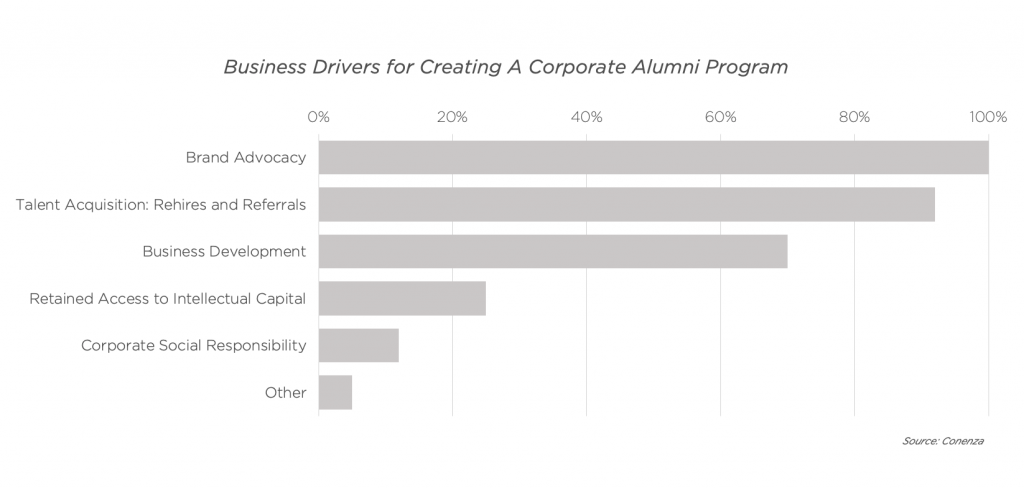
Whatever the reasons for developing an alumni program, organizations are reaping significant benefits.
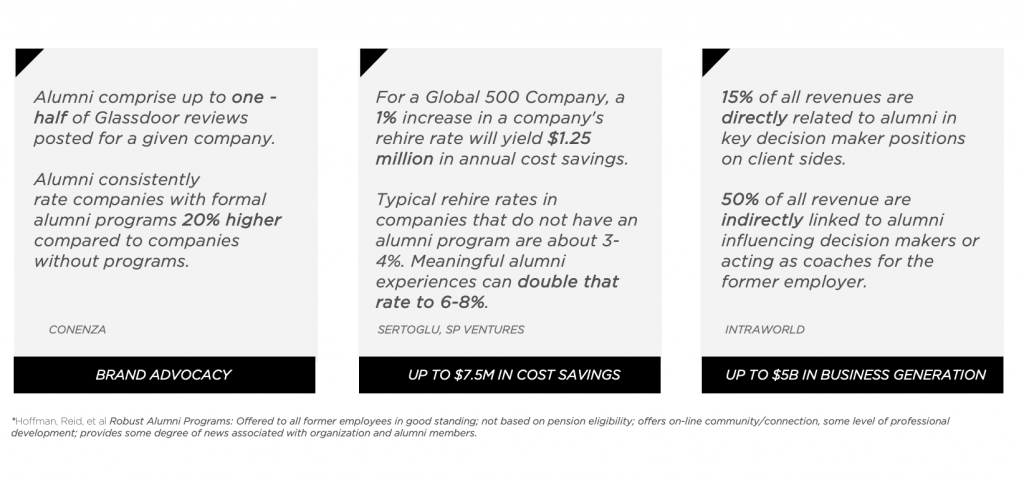
So how can an organization take these insights and embark upon developing their own alumni community? Rebecca argued that companies must utilize human-centred design to better understand their alumni. Developing a community that is centered on the needs of their alumni, will drive a sense of community, engagement and value.
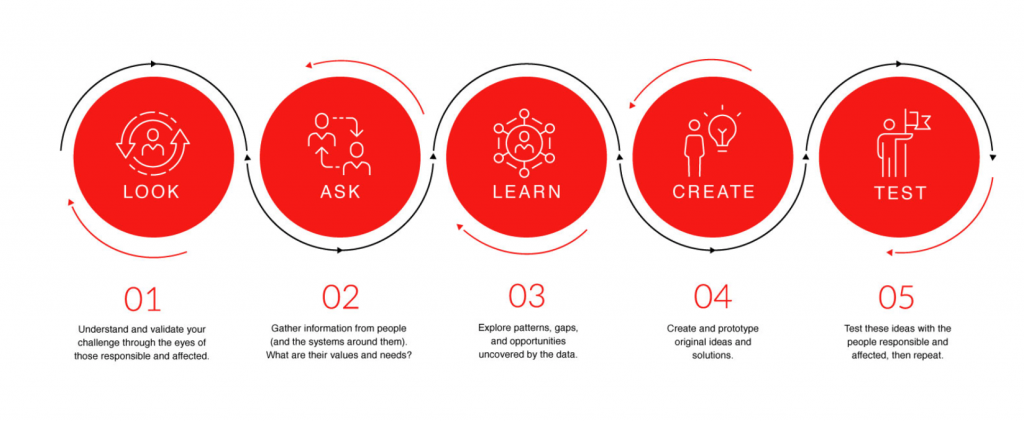
At the beginning of the development process, Rebecca and her team at Coca-Cola interviewed their alumni, retirees and current employees. From that, they identified three areas of opportunity.
- Expand the community
- Enhance the experience
- Evolve the offerings
They noticed that the company’s original definition of alumni could be expanded to include more associates, leading to increased engagement. Opportunities were discovered to enhance the user experience for their alumni by making improvements to the website and at the same time providing more opportunities for increased alumni engagement.
Rebecca also identified a diverse audience with varying needs. From this, she was able to develop six key alumni profiles to illustrate the range of perspectives and needs that a future alumni community would need to serve.
“The key is being able to engage with each profile appropriately and having a communications strategy that addresses their specific needs”. – Rebecca Cedrone
Vision & Value
Rebecca argued that companies need to define their own vision and value proposition. Looking to nurture lifelong relationships with members by embracing their individuality, cultivating their connection to each other and empowering them to influence the future of the business and the brand. Fostering intellectual curiosity through opportunities to both contribute to and learn from the communities collective knowledge and skills.
Members should be empowered to make a difference by honoring shared values and responsibilities. Rebecca noted that these values will allow an organization to constantly evaluate the development and success of the community.
Designing an Alumni Community with a layered approach
Creating meaningful alumni offerings requires a holistic approach to truly identify human needs and desires and orchestrate moments that matter for all segments of the alumni community.
A layered approach allows a company to connect the business proposition with the needs of alumni to create an engaging experience, while also enhancing key business drivers.
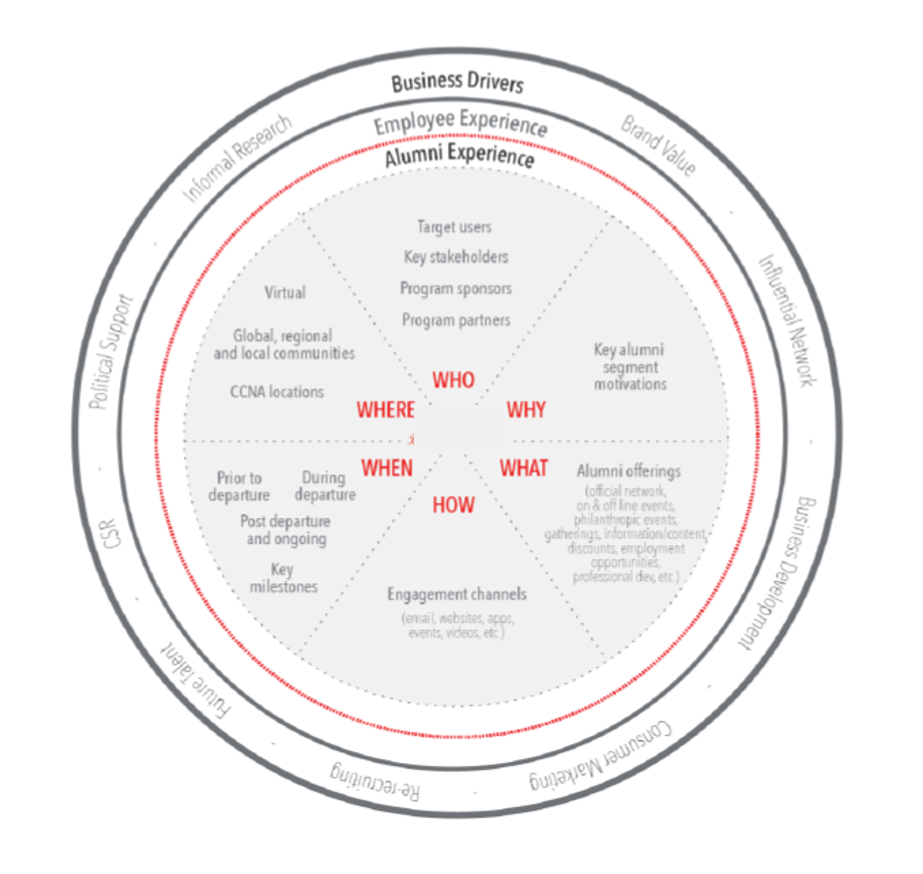
Choosing the right platform
Rebecca noted that it is vital to choose a scalable platform where members can engage, find value and allows them to manage key business metrics. Collaboration and support from across the organization is critical to the success of the alumni community and implementation begins with senior leadership alignment, with a ‘top-down’ approach.
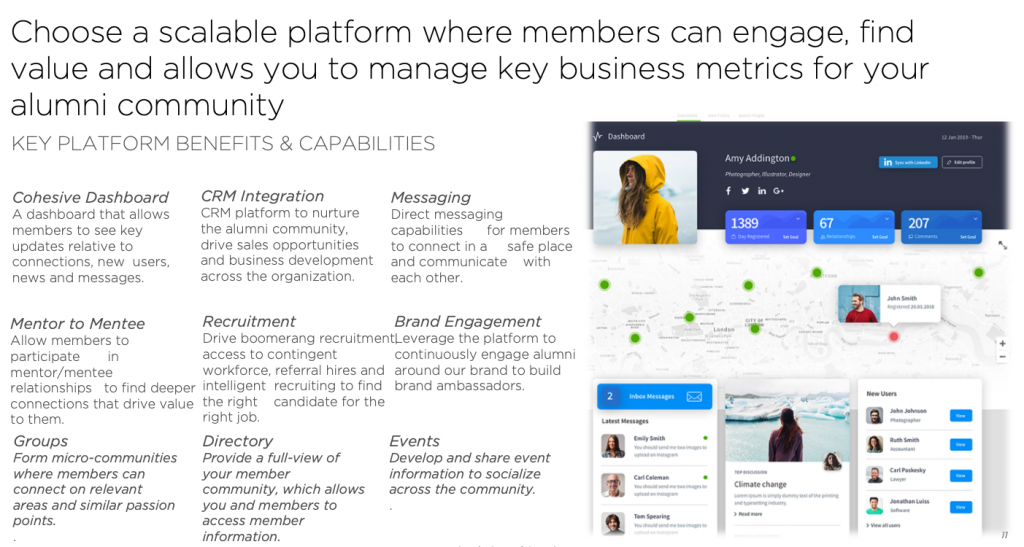
The Key Takeaways
In summary, for an organization to develop a truly effective alumni community, Rebecca noted four key points to consider.
- Identify the key benefits of developing an alumni community
- Understand the needs of your alumni
- Align the strategy and execution across your organization
- Identify a scalable platform with a provider who prioritizes your brand, your key business metrics and your alumni needs.





